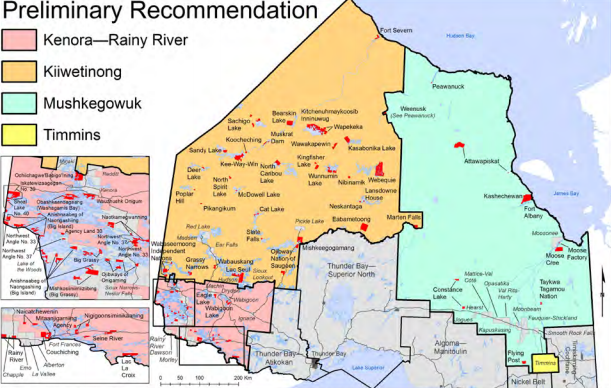Northern Ontario will gain two seats in the provincial legislature—including one with a majority Indigenous population— if a preliminary report from a commission appointed by the government is enacted.
The Far North Electoral Boundaries Commission is proposing to create the additional ridings out of the existing ridings of Kenora-Rainy River and Timmins-James Bay.
Kenora-Rainy River would include Kenora, Dryden, Fort Frances and Rainy River. It would have a population of 53,000, of which 13 per cent would be Indigenous.
Kiiwetinong would be comprised of the northern portion of the current Kenora-Rainy River electoral district plus Marten Falls. The riding would have about 33,000 residents, 60 per cent being Indigenous.
Mushkegowuk would include the northern portion of the current Timmins-James Bay electoral district plus Weenusk (Peawanuck) First Nation, with a population of just under 30,000 including 15 per cent Indigenous and 61 per cent Francophone.
Timmins would be made up of the City of Timmins itself, population 42,000 with 3 per cent Indigenous and 39 per cent Francophone.
In the preliminary report issued Monday, the commission said that during its first round of public information meetings, there was an overwhelming consensus to create two new electoral districts.
It also noted that it "repeatedly heard that representation of Indigenous people should be a factor of particular importance."
The commission will begin a second round of consultations across northern Ontario this week to receive feedback on its recommendations.
